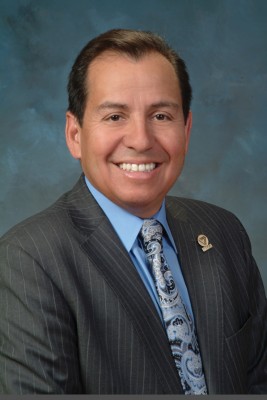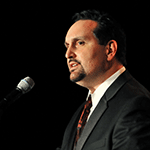
Valley Economic Development Center (VEDC) closed its 2013 fiscal year with less than 0.75 percent in net uncollected debts—better than most banks. The company’s president and CEO, Roberto Barragan, credits an underserved market of minority- and women-owned enterprises that only needed a chance to prove themselves. VEDC took on that type of risk, and the payoff has been on the order of millions.
VEDC is already one of the largest small-business lenders in California, but over the past two years you’ve expanded all over the country.
Yes, we opened in Chicago in 2012 and lent $2 million to 12 small businesses. In December of 2012 we acquired a nonprofit and now have a full-time staff in Reno, NV. We just opened an office in New York this past December to serve the tri-state area, and we’ve already approved $2 million in loans there. We’re in the process of lending another $3 million over the next 18 months.
What is the makeup of the type of business you typically lend to?
We have a high focus on women- and minority-owned businesses, but more generally we identify companies that have collateral and decent credit with an upward sales trend but might be struggling to have solid, two-year profitability. That type of business might have incredible growth opportunity moving forward with the right loan. In two years, the borrower can graduate from our loan and another bank will come along, see the possibilities and take on the loan themselves.
What risks are typically associated with lending to small business?
Ensuring that there is enough money to get the job done. If small businesses can’t support a large loan, we can work with the business to raise additional equity and have a heart-to-heart discussion about their business plans. We look at the structure of their budgets, the needs for establishing the businesses, and the working capital. We make sure that if they’re opening locations, they have worked with local government entities and have determined all the costs properly. We ask for projections to be sure that they have an idea of exactly how the business will operate over the first few months.
What about the stigma with lending to these communities? Is it still there?
I think the stigmas about lending to these communities exist, but we’re breaking them. One thing we are heartened by is that women entrepreneurs are the fastest-growing segment in the country but sometimes have less experience with cash flow or collateral. It takes an organization like ours that will work with them, come to the conclusion that the business owner will make it work, and then make a loan that will help make her successful.
How did you identify this market segment (small business) as a target? Did you see small and Hispanic-owned businesses being underserved?
After the financial crisis, credit simply disappeared. Many of the large banks pulled out of small-business lending and other banks disappeared entirely. It was a huge change-up in the small-business lending environment, so we stepped into that gap. As we work with other financial institutions and expand into other markets, other financial institutions now recognize that they have a certain responsibility to small business. These institutions are not retail banks. They are investment banks, wealth management firms, immense companies. They meet their Community Reinvestment Act requirements through us by providing capital for our loan programs. It’s great for us that they have a mandated responsibility to support this kind of lending.
How have you seen Hispanic-owned businesses grow?
The growth in the number of Hispanic-owned small businesses is evident, and they’re significantly larger these days. It’s no longer just the mom-and-pop shop, no longer just the taqueria; it’s the building supply companies and the $25 million trucking companies working on large highway construction projects. It’s very gratifying to see this type of growth. And with our support, they can transition into the more mainstream banking world.
What obstacles did you face in that postrecession period?
The main challenge was to understand the state-by-state issues when it came to the real estate market. Every state handles title and escrow differently. In California you get real-time information about a property, whereas in New York it might take 10 days. There are significant differences in cost and timelines in getting things done from place to place.
Tell us about your partnerships with UBS Bank and Chase.
Chase has been an incredible partner of VEDC. It provided $5 million in late 2010 to take our loan programs statewide in California. More recently, it provided support to build up our national infrastructure, and it has continued to be very helpful as we bring on a COO to help build our national platform. UBS is a national partner that has allowed us to expand to
Chicago and New York.
What’s next for VEDC?
We are moving forward to expand our national platform. We know how to successfully lend to women- and minority-owned businesses in underserved communities and not lose money. It’s the crux of what we’ve created and what we’re trying to expand nationwide. In fact, we’re looking at working in Miami by this fall.
VEDC’s big impact
on small business
By the Numbers
$360,000 dollars lent to small businesses to date
98,669 businesses assisted by VEDC economic development services
27,499 jobs created and saved
75 percent of VEDC clientele are low- to moderate-income businesses
70 percent of VEDC clientele are female entrepreneurs

